Coding the Waveshare RP2040 Matrix
Par un écrivain mystérieux
Last updated 16 mai 2024
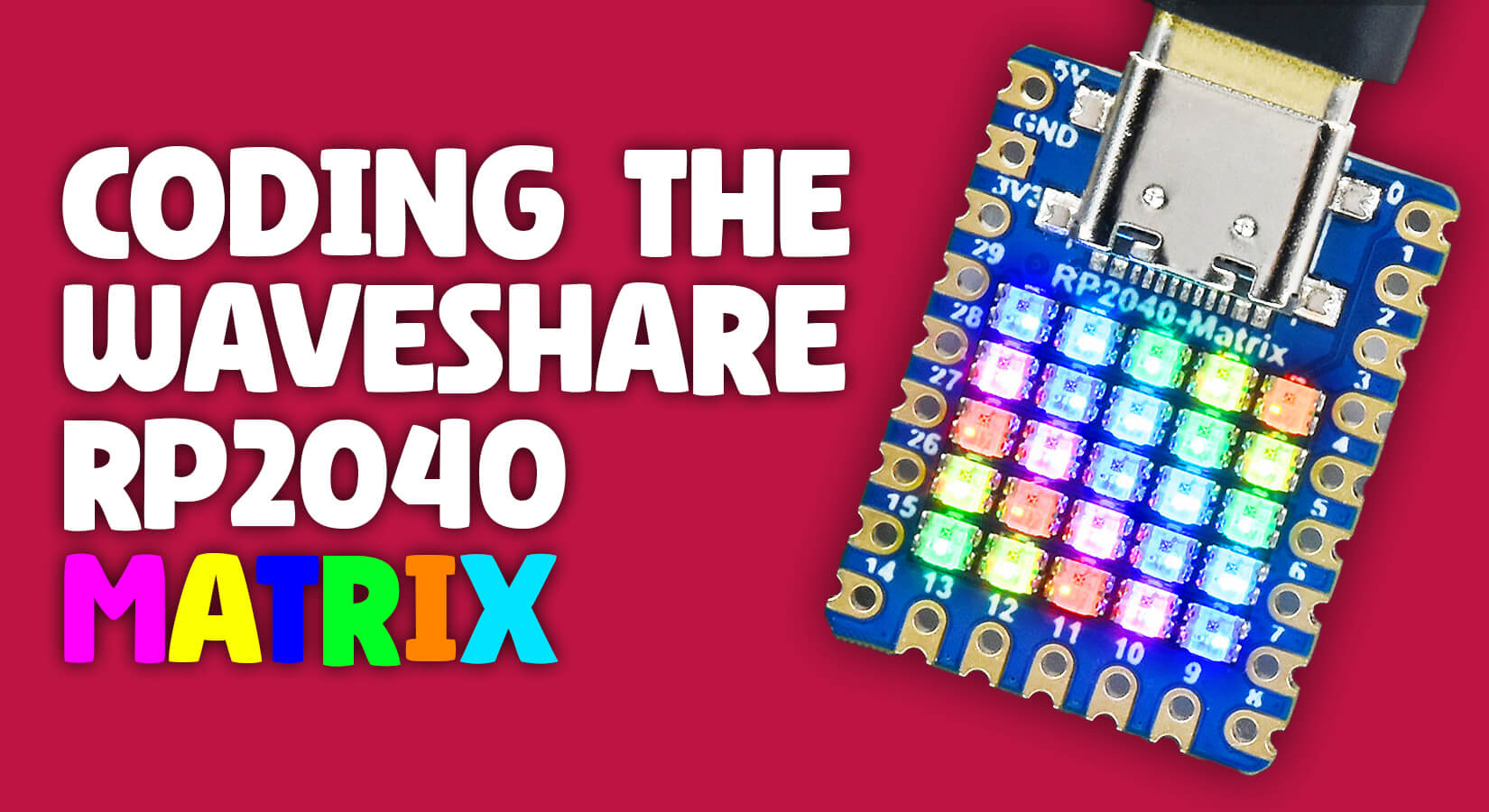
The Waveshare RP2040 Matrix development board is an inexpensive, super-compact RP2040 microcontroller with a tiny 5x5 addressable RGB LED matrix on the front. This tiny development board is packed with interesting features including: 25 RGB LEDs (WS2812) in a 5x5 array – very bright! USB-C for power and programming BOOT and RESET buttons RP2040 processor – works like a Raspberry Pi Pico Plenty of GPIO connections with ADC, SPI, I2C and UART available It makes an ideal board for learning about addressable RGB LEDs, and in this tutorial Tony will demonstrate how to program it using MicroPython. Before we start, let's show you a range of possibilities with this great little matrix: Note: this an intermediate/advanced skills project. What you will need We assume that you have installed Thonny on your computer and set up your Raspberry Pi Pico with the most
Official Raspberry Pi reseller. The ultimate Raspberry Pi & maker superstore with all of the biggest brands under one roof. Raspberry Pi Zero stockist. Next Day delivery available.
The Waveshare RP2040 Matrix development board is an inexpensive, super-compact RP2040 microcontroller with a tiny 5x5 addressable RGB LED matrix on the front. This tiny development board is packed with interesting features including: 25 RGB LEDs (WS2812) in a 5x5 array – very bright! USB-C for power and programming BOOT and RESET buttons RP2040 processor – works like a Raspberry Pi Pico Plenty of GPIO connections with ADC, SPI, I2C and UART available It makes an ideal board for learning about addressable RGB LEDs, and in this tutorial Tony will demonstrate how to program it using MicroPython. Before we start, let's show you a range of possibilities with this great little matrix: Note: this an intermediate/advanced skills project. What you will need We assume that you have installed Thonny on your computer and set up your Raspberry Pi Pico with the most recent MicroPython firmware (UF2). If not, check out our Raspberry Pi Pico Getting Started Guide where this is covered in detail. For this quick intro and matrix coding, all you'll need are: Waveshare RP2040 Matrix development board USB to USB-C cable Thonny Editor (free) Board Setup Install the latest UF2 If you plug the USB-C cable into the socket on the board and power it from your computer you will find that it has a test only UF2 (firmware) installed. We need to replace the installed UF2 with the current RP2040 MicroPython version which you can download here. As mentioned above, we have assumed that you know how to install a new UF2 file. Programming the matrix LED pins (and a warning!) Our product page for this board provides links Waveshare's wiki and a pinout guide. This wiki tells us that the addressable RGB LEDs are connected to GPIO 16. There are 25 LEDs, numbered 0 to 24 and each can be set to a wide variety of colours by providing red, green and blue (RGB) values in the range 0 to 255. We have found that values in the range 0 to 20 are sufficient for most purposes. Waveshare warn against prolonged use of high values which could damage the device as it overheats - you've been warned! Code Library Luckily we can use the Neopixel library which is now built-in to MicroPython. This makes it very easy to get up and running. The following code imports the library and initialises the LEDs: # Waveshare RP2040-MATRIX with 5x5 grid of Neopixels # NB colours (green, red, blue) # Tony Goodhew for the pihut.com - 25 Aug 2023 import time from machine import Pin from neopixel import NeoPixel # Set up 25 Neopixels on GPIO 16 np = NeoPixel(Pin(16), 25, bpp = 3) # bpp = bytes per pixel (GRB) These LEDs are slightly different from Adafruit Neopixels and the colour order is green, red, blue (GRB rather than RGB). It doesn't make a lot of difference, we just need to add our colour values in the right places. We can set the colour of a pixel by adding the line below: np[2] = (0, 10, 10) # Set the third pixel to MAGENTA Red and blue (the '10' values) mixed make a purple colour, called magenta, and the LEDs are counted from zero to 24. This only stores the values in a buffer - the instruction np.write() sends the contents of the buffer to the LEDs which updates the colours. This is very fast! Try running the code below with the added lines. You should find the centre pixel on the top line lights up purple: # Waveshare RP2040-MATRIX with 5x5 grid of Neopixels # NB colours (green, red, blue) # Tony Goodhew for the pihut.com - 25 Aug 2023 import time from machine import Pin from neopixel import NeoPixel # Set up 25 Neopixels on GPIO 16 np = NeoPixel(Pin(16), 25, bpp = 3) # bpp = bytes per pixel (GRB) np[2] = (0, 10, 10) # Set the third pixel to MAGENTA np.write() Now try the following code and see what happens. Note the extra brackets in the fill instructions. Colour is defined with a tuple and the brackets are essential: # Waveshare RP2040-MATRIX with 5x5 grid of Neopixels # NB colours (green, red, blue) # Tony Goodhew for the pihut.com - 25 Aug 2023 import time from machine import Pin from neopixel import NeoPixel # Set up 25 Neopixels on GPIO 16 np = NeoPixel(Pin(16), 25, bpp = 3) # bpp = bytes per pixel (GRB) time.sleep(2) np.fill((0,10,0)) # Fill display with RED np.write() time.sleep(2) np.fill((0,0,0)) # Fill display with BLACK np.write() Some things to try Set pixel[0] green, pixel[21] blue and pixel[24] yellow Write a procedure to clear the screen and test it Fill the screen with randomly coloured pixels in a random order Using coordinates - (x, y) or (col, row) values Time to step it up a gear! We're now going to use coordinates to drive the LEDs, but before we explain anything, copy the code example below and give it a spin: # Waveshare RP2040-MATRIX with 5x5 grid of Neopixels # NB colours (green, red, blue) # Tony Goodhew for the pihut.com - 25 Aug 2023 import time from machine import Pin from neopixel import NeoPixel # Set up 25 Neopixels on GPIO 16 np = NeoPixel(Pin(16), 25, bpp = 3) # bpp = bytes per pixel (GRB) def clear(): np.fill((0,0,0)) np.write() def wait(t): # Delay t seconds time.sleep(t) for i in range(25): # 'Natural' order 0-24, as connected on board np[i] = (10,10,0) # Yellow ON np.write() wait(0.15) np[i] = (0,0,0) # Black OFF - Single blink wait(0.2) clear() wait(0.6) for row in range(5): # Row at a time for col in range(5): np[5 * row + col] = (5,5,5) # White np.write() wait(0.15) wait(0.1) clear() for col in range(5): # Column at a time for row in range(5): np[5 * row + col] = (0,0,5) # Blue np.write() wait(0.15) wait(0.2) clear() def sq(x,y,n,r,g,b): for col in range(x,x+n): # Top and Bottom np[5 * y + col] = (g,r,b) np[5 * (y+n-1) + col] = (g,r,b) for row in range(y,y+n): # Sides np[5 * row + x] = (g,r,b) np[5 * row + x + n -1] = (g,r,b) np.write() tt = 0.6 sq(0,0,5,4,0,0) wait(tt) sq(0,0,4,0,4,0) wait(tt) sq(0,0,3,0,0,4) wait(tt) sq (0,0,2,4,4,0) wait(tt) sq(0,0,1,0,4,4) wait(tt) clear() So what does it do? Look through the code along with the points below to get an understanding of what it's doing and where: It sets up the RGB LEDs Defines procedures to clear the screen and wait a short period Blinks each of the LEDs in turn with yellow in the ‘natural order’ 0 - 24 Slowly fills the display row by row with white Slowly fills the display column by column in blue Defines a procedure to draw squares and then draws a series of squares. Example coordinate usage Let's look at a simple example: col = 3 row = 1 np[5 * row + col] = (0,0,5) # Blue These instructions will turn LED 8 blue, because we're referencing the LED on column 3, row 1, as you can see from the grid below: Characters and text Explaining how characters and scrolling works is probably worthy of an article of its own, so we won't go into the detail of 'how' today, but you can download our example code, which is fully commented and easy to use, and try it for yourself. You don't need to understand how it works to make use of the of the instructions which follow – just treat the code like a library! There are two instructions: display(n,rr,gg,bb) # (ASCII value, red, green, blue) = Single stationary character scroll(s,rr,gg,bb) # (message string, red, green, blue) = Scrolled message Check out the video to see it in action. Things to try Scroll your name across the display Use a 10k potentiometer as an input device (range 0 to 9) and display the value on the LEDs Draw a red heart shape on a blue background Use 3 potentiometers to control the red, green and blue values of pixels at three corners of the display and their mixed colour on a square in the centre Bonus Game – Zap it Let's have a little fun! This is a hand and eye co-ordination game and just needs a simple button/switch (momentary type) connecting GPIO 14 to GND. How to play A white target runs round the edge of the display A player has three goes in a game The player starts with 100 points and tries to zap the target while it is to the right of the red target marker by pressing the button If the player hits the button too early, too late or misses a rotation past the target position a point is lost A hit is registered with the target turning yellow and a green, go counter, pixel is lit A point lost by a missed hit is indicated by a short blue flash The score is shown at the end of the game Can you score 100? Zap it code Here's the code for the game. As usual, copy it over to Thonny (use the copy button on the right, it's easier!) and run it like any other code: # WS RP2040 'Zap it' Game # Needs a button switch between GPIO 14 and GND # Tony Goodhew 28th Aug 2023 (Author) # How to play: # A white target runs round the edge of the display. # The player starts with 100 points and tries zap the target while it is # to the right of the red target marker. # If the player hits the button too early, too late or misses a rotation # past the target position a point is lost. # A hit is registered with the target turning yellow and a green pixel is lit. # A point lost is indicated by a short blue flash. # The score is shown at the end of the go. import time from machine import Pin from neopixel import NeoPixel # Set up 25 Neopixels on GPIO 16 np = NeoPixel(Pin(16), 25, bpp = 3) # bpp = bytes per pixel (GRB) def clear(): np.fill((0,0,0)) np.write() def wait(t): # Delay t seconds time.sleep(t) # =========== START OF FONT LIBRARY =========== # Instructions: # display(n,rr,gg,bb) # (ASCII value, red, green, blue) = stationary character # scroll(s,rr,gg,bb) # (string, red, green, blue) = Scrolled message # Character codes ASCII 32 - 127 5x5 pixels # 5x5 font - Tony Goodhew 26th August 2023 (author) # 5 columns of 5 bits = LSBs [@ == 00000] q = [ @@@@@, # 32 @@]@@, # ! 33 @X@X@, # 34 J_J_J, # # 35 IU_UR, # $ 36 QBDHQ, # % 37 JUJA@, # & 38 @@X@@, # ' 39 @NQ@@, # ( 40 @@QN@, # ) 41 @J~J@, # * 42 @DND@, # + 43 @@BC@, # , 44 @DDD@, # - 45 @@A@@, # . 46 ABDHP, # / 47 NQQN@, # 0 48 @I_A@, # 1 49 IS_I@, # 2 50 UUUJ@, # 3 51 ^BGB@, # 4 52 ]UUR@, # 5 53 NUUF@, # 6 54 PSTX@, # 7 55 JUUJ@, # 8 56 LUUN@, # 9 57 @@E@@, # : 58 @@BC@, # ; 59 DJQ@@, # < 60 @JJJ@, # = 61 @QJD@, # > 62 HPUH@, # ? 63 _QUU], # @ 64 OTTO@, # A 65 _UUJ@, # B 66 NQQQ@, # C 67 _QQN@, # D 68 _UUQ@, # E 69 _TTP@, # F 70 NQUV@, # G 71 _DD_@, # H 72 @@_@@, # I 73 BAA^@, # J 74 _DJQ@, # K 75 _AAA@, # L 76 _HDH_, # M 77 _HD_@, # N 78 NQQN@, # O 79 _TTH@, # P 80 NQSO@, # Q 81 _TVI@, # R 82 IUUR@, # S 83 PP_PP, # T 84 ^AA^@, # U 85 XFAFX, # V 86 ~C~C~, # W 87 QJDJQ, # X 88 PHGHP, # Y 89 QSUY@, # Z 90 @_Q@@, # [ 91 PHDBA, # \ 92 @Q_@@, # ] 93 @HPH@, # ^ 94 AAAA@, # _ 95 @@X@@, # ` 96 BUUO@, # a 97 _EEB@, # b 98 FIII@, # c 99 BEE_@, # d 100 NUUH@, # e 101 @_TP@, # f 102 HUUN@, # g 103 @_DG@, # h 104 @@W@@, # i 105 @AAV@, # j 106 _DJA@, # k 107 @_A@@, # l 108 OHDHO, # m 109 @GDG@, # n 110 FIIF@, # o 111 OJJD@, # p 112 DJJG@, # q 113 OHHD@, # r 114 IUUR@, # s 115 @H_I@, # t 116 NAAN@, # u 117 HFAFH, # v 118 LCLCL, # w 119 @JDJ@, # x 120 @LEO@, # y 121 @KMI@, # z 122 @DNQ@, # { 123 @_@@@, # | 124 @QND@, # } 125 HPHP@, # ~ 126 @HTH@, # 127 ] # This procedure converts the font codes to a string # of 25 ones and zeros characters - 5 cols of 5 rows def decode(qq): powers = [16,8,4,2,1] str25 = for p in range(5): n = ord(qq[p]) if n == 126: n = 92 # replace ~ with \ str5 = for c in range(5): if ((powers[c] & n)/powers[c]) == 1: str5 = str5 + 1 else: str5 = str5 + 0 str25 = str25 + str5 return str25 # Display a single character def display(n,rr,gg,bb): # ASCII value, red, green blue qq = decode(q[n]) # get coded character pattern clear() # Clear the display to BLACK for c in range(5): # Loop through the 5 columns for r in range(5): # Loop through the rows cc = qq[r + 5 * c] # current 'bit' at (c, r) coordinate if cc == 1: # Is current 'bit' a one? np[5 * r + c] = (gg,rr,bb) # If so, set to colour np.write() # Update the display # Display a 'frame' of 25 bits - Used in scroll def display_frame(ss,rr,gg,bb): # Message string of chars and colour clear() for c in range(5): # Columns for r in range(5): # Rows cc = ss[r + 5 * c] # Get the 'bit' at (c,r) if cc == 1: # Is it a one? np[5 * r + c] = (gg,rr,bb) # If so, set to colour np.write() # Update display def scroll(s,rr,gg,bb): long = s = + s + # Add a space character at the end l = len(s) # Length of string for p in range(l): # Loop through the characters i = ord(s[p])-32 # Adjusted ASCII No of character temp = decode(q[i]) # get coded character code long = long + temp # Concatenate char to long string last5 = temp[-5:] # Get last 5 characters if last5 != 00000: # Is there a 1 in last column? long = long +00000 # If so, add an extra space column (W and M are wider) # We now have a very long string of ones and zeros to send to # the display in small 'frames' of 25 bits each to fill the pixels p = 0 # print(s, Buffer: ,len(long)) while p < len(long)-25: # Have we reached the end? frame = long[p:p + 25] # Extract the 'frame' of 25 bits display_frame(frame,rr,gg,bb) # Show the frame on the Neopixels p = p + 5 # Move pointer forward by 1 column wait(0.17) # Short delay - reduce to speed up scrolling # ========== END OF FONT LIBRARY ============= # ======= MAIN =================== sw = Pin(14, Pin.IN,Pin.PULL_UP) # Set up button - Zero when pressed # Title scroll(Zap it,5,5,0) clear() np.write() score = 0 # Targets zapped! opps = 0 # Zap opportunities = pass the target area p = 0 # Position of target on circuit (0-15) errors = 0 err = 0 running = True # Loop control variable loops = 4000 # Delay loop variable - reduce to increase speed - harder! route = [10,5,0,1,2,3,4,9,14,19,24,23,22,21,20,15] # By pixel numbers p = 0 err = 0 while score < 3: # You have 3 goes running = True display(17 + score,0,0,5) # Display the 'Go' number - 1 to 3 np.write() time.sleep(0.3) clear() np[13] = (0,5,0) # Display Red 'Target marker' if score > 0: np[6] = (3,0,0) if score == 2: np[7] =(3,0,0) np.write while running: np[route[p]] = (3,3,3) # White target np.write() for w in range(loops): if sw.value() == 0: # Read switch if p != 8 : # Off target ? # Missed! - too early or too late err = 1 # Increment errors np[16] = (0,0,5) # Err Flag set - blue np.write() if (p == 8) and (err == 0):# On target? # Zapped! w = loops+10 # # Halt w loop running = False # Halt outer loop np[14] = (5,5,0) # Hit flag set = yellow score = score + 1 # Increment score np[score + 5] = (3,0,0) # Hit score incremented - green np.write() time.sleep(1) if p == 8: opps = opps + 1 # Increment opportunities counter np[route[p]] = (0,0,0) # Clear current target position np.write() p = (p + 1) % 16 # Increment loop pointer if p == 0: errors = errors + err # Update errors err = 0 np[16] = (0,0,0) # Turn off blue err flag np.write() print(score, opps, errors) result = 103 - opps - errors print(result) scroll(Score: + str(result),5,5,0) About the Author This article was written by Tony Goodhew. Tony is a retired teacher of computing who starting writing code back in 1968 when it was called programming - he started with FORTRAN IV on an IBM 1130! An active Raspberry Pi community member, his main interests now are coding in MicroPython, travelling and photography.
Official Raspberry Pi reseller. The ultimate Raspberry Pi & maker superstore with all of the biggest brands under one roof. Raspberry Pi Zero stockist. Next Day delivery available.
The Waveshare RP2040 Matrix development board is an inexpensive, super-compact RP2040 microcontroller with a tiny 5x5 addressable RGB LED matrix on the front. This tiny development board is packed with interesting features including: 25 RGB LEDs (WS2812) in a 5x5 array – very bright! USB-C for power and programming BOOT and RESET buttons RP2040 processor – works like a Raspberry Pi Pico Plenty of GPIO connections with ADC, SPI, I2C and UART available It makes an ideal board for learning about addressable RGB LEDs, and in this tutorial Tony will demonstrate how to program it using MicroPython. Before we start, let's show you a range of possibilities with this great little matrix: Note: this an intermediate/advanced skills project. What you will need We assume that you have installed Thonny on your computer and set up your Raspberry Pi Pico with the most recent MicroPython firmware (UF2). If not, check out our Raspberry Pi Pico Getting Started Guide where this is covered in detail. For this quick intro and matrix coding, all you'll need are: Waveshare RP2040 Matrix development board USB to USB-C cable Thonny Editor (free) Board Setup Install the latest UF2 If you plug the USB-C cable into the socket on the board and power it from your computer you will find that it has a test only UF2 (firmware) installed. We need to replace the installed UF2 with the current RP2040 MicroPython version which you can download here. As mentioned above, we have assumed that you know how to install a new UF2 file. Programming the matrix LED pins (and a warning!) Our product page for this board provides links Waveshare's wiki and a pinout guide. This wiki tells us that the addressable RGB LEDs are connected to GPIO 16. There are 25 LEDs, numbered 0 to 24 and each can be set to a wide variety of colours by providing red, green and blue (RGB) values in the range 0 to 255. We have found that values in the range 0 to 20 are sufficient for most purposes. Waveshare warn against prolonged use of high values which could damage the device as it overheats - you've been warned! Code Library Luckily we can use the Neopixel library which is now built-in to MicroPython. This makes it very easy to get up and running. The following code imports the library and initialises the LEDs: # Waveshare RP2040-MATRIX with 5x5 grid of Neopixels # NB colours (green, red, blue) # Tony Goodhew for the pihut.com - 25 Aug 2023 import time from machine import Pin from neopixel import NeoPixel # Set up 25 Neopixels on GPIO 16 np = NeoPixel(Pin(16), 25, bpp = 3) # bpp = bytes per pixel (GRB) These LEDs are slightly different from Adafruit Neopixels and the colour order is green, red, blue (GRB rather than RGB). It doesn't make a lot of difference, we just need to add our colour values in the right places. We can set the colour of a pixel by adding the line below: np[2] = (0, 10, 10) # Set the third pixel to MAGENTA Red and blue (the '10' values) mixed make a purple colour, called magenta, and the LEDs are counted from zero to 24. This only stores the values in a buffer - the instruction np.write() sends the contents of the buffer to the LEDs which updates the colours. This is very fast! Try running the code below with the added lines. You should find the centre pixel on the top line lights up purple: # Waveshare RP2040-MATRIX with 5x5 grid of Neopixels # NB colours (green, red, blue) # Tony Goodhew for the pihut.com - 25 Aug 2023 import time from machine import Pin from neopixel import NeoPixel # Set up 25 Neopixels on GPIO 16 np = NeoPixel(Pin(16), 25, bpp = 3) # bpp = bytes per pixel (GRB) np[2] = (0, 10, 10) # Set the third pixel to MAGENTA np.write() Now try the following code and see what happens. Note the extra brackets in the fill instructions. Colour is defined with a tuple and the brackets are essential: # Waveshare RP2040-MATRIX with 5x5 grid of Neopixels # NB colours (green, red, blue) # Tony Goodhew for the pihut.com - 25 Aug 2023 import time from machine import Pin from neopixel import NeoPixel # Set up 25 Neopixels on GPIO 16 np = NeoPixel(Pin(16), 25, bpp = 3) # bpp = bytes per pixel (GRB) time.sleep(2) np.fill((0,10,0)) # Fill display with RED np.write() time.sleep(2) np.fill((0,0,0)) # Fill display with BLACK np.write() Some things to try Set pixel[0] green, pixel[21] blue and pixel[24] yellow Write a procedure to clear the screen and test it Fill the screen with randomly coloured pixels in a random order Using coordinates - (x, y) or (col, row) values Time to step it up a gear! We're now going to use coordinates to drive the LEDs, but before we explain anything, copy the code example below and give it a spin: # Waveshare RP2040-MATRIX with 5x5 grid of Neopixels # NB colours (green, red, blue) # Tony Goodhew for the pihut.com - 25 Aug 2023 import time from machine import Pin from neopixel import NeoPixel # Set up 25 Neopixels on GPIO 16 np = NeoPixel(Pin(16), 25, bpp = 3) # bpp = bytes per pixel (GRB) def clear(): np.fill((0,0,0)) np.write() def wait(t): # Delay t seconds time.sleep(t) for i in range(25): # 'Natural' order 0-24, as connected on board np[i] = (10,10,0) # Yellow ON np.write() wait(0.15) np[i] = (0,0,0) # Black OFF - Single blink wait(0.2) clear() wait(0.6) for row in range(5): # Row at a time for col in range(5): np[5 * row + col] = (5,5,5) # White np.write() wait(0.15) wait(0.1) clear() for col in range(5): # Column at a time for row in range(5): np[5 * row + col] = (0,0,5) # Blue np.write() wait(0.15) wait(0.2) clear() def sq(x,y,n,r,g,b): for col in range(x,x+n): # Top and Bottom np[5 * y + col] = (g,r,b) np[5 * (y+n-1) + col] = (g,r,b) for row in range(y,y+n): # Sides np[5 * row + x] = (g,r,b) np[5 * row + x + n -1] = (g,r,b) np.write() tt = 0.6 sq(0,0,5,4,0,0) wait(tt) sq(0,0,4,0,4,0) wait(tt) sq(0,0,3,0,0,4) wait(tt) sq (0,0,2,4,4,0) wait(tt) sq(0,0,1,0,4,4) wait(tt) clear() So what does it do? Look through the code along with the points below to get an understanding of what it's doing and where: It sets up the RGB LEDs Defines procedures to clear the screen and wait a short period Blinks each of the LEDs in turn with yellow in the ‘natural order’ 0 - 24 Slowly fills the display row by row with white Slowly fills the display column by column in blue Defines a procedure to draw squares and then draws a series of squares. Example coordinate usage Let's look at a simple example: col = 3 row = 1 np[5 * row + col] = (0,0,5) # Blue These instructions will turn LED 8 blue, because we're referencing the LED on column 3, row 1, as you can see from the grid below: Characters and text Explaining how characters and scrolling works is probably worthy of an article of its own, so we won't go into the detail of 'how' today, but you can download our example code, which is fully commented and easy to use, and try it for yourself. You don't need to understand how it works to make use of the of the instructions which follow – just treat the code like a library! There are two instructions: display(n,rr,gg,bb) # (ASCII value, red, green, blue) = Single stationary character scroll(s,rr,gg,bb) # (message string, red, green, blue) = Scrolled message Check out the video to see it in action. Things to try Scroll your name across the display Use a 10k potentiometer as an input device (range 0 to 9) and display the value on the LEDs Draw a red heart shape on a blue background Use 3 potentiometers to control the red, green and blue values of pixels at three corners of the display and their mixed colour on a square in the centre Bonus Game – Zap it Let's have a little fun! This is a hand and eye co-ordination game and just needs a simple button/switch (momentary type) connecting GPIO 14 to GND. How to play A white target runs round the edge of the display A player has three goes in a game The player starts with 100 points and tries to zap the target while it is to the right of the red target marker by pressing the button If the player hits the button too early, too late or misses a rotation past the target position a point is lost A hit is registered with the target turning yellow and a green, go counter, pixel is lit A point lost by a missed hit is indicated by a short blue flash The score is shown at the end of the game Can you score 100? Zap it code Here's the code for the game. As usual, copy it over to Thonny (use the copy button on the right, it's easier!) and run it like any other code: # WS RP2040 'Zap it' Game # Needs a button switch between GPIO 14 and GND # Tony Goodhew 28th Aug 2023 (Author) # How to play: # A white target runs round the edge of the display. # The player starts with 100 points and tries zap the target while it is # to the right of the red target marker. # If the player hits the button too early, too late or misses a rotation # past the target position a point is lost. # A hit is registered with the target turning yellow and a green pixel is lit. # A point lost is indicated by a short blue flash. # The score is shown at the end of the go. import time from machine import Pin from neopixel import NeoPixel # Set up 25 Neopixels on GPIO 16 np = NeoPixel(Pin(16), 25, bpp = 3) # bpp = bytes per pixel (GRB) def clear(): np.fill((0,0,0)) np.write() def wait(t): # Delay t seconds time.sleep(t) # =========== START OF FONT LIBRARY =========== # Instructions: # display(n,rr,gg,bb) # (ASCII value, red, green, blue) = stationary character # scroll(s,rr,gg,bb) # (string, red, green, blue) = Scrolled message # Character codes ASCII 32 - 127 5x5 pixels # 5x5 font - Tony Goodhew 26th August 2023 (author) # 5 columns of 5 bits = LSBs [@ == 00000] q = [ @@@@@, # 32 @@]@@, # ! 33 @X@X@, # 34 J_J_J, # # 35 IU_UR, # $ 36 QBDHQ, # % 37 JUJA@, # & 38 @@X@@, # ' 39 @NQ@@, # ( 40 @@QN@, # ) 41 @J~J@, # * 42 @DND@, # + 43 @@BC@, # , 44 @DDD@, # - 45 @@A@@, # . 46 ABDHP, # / 47 NQQN@, # 0 48 @I_A@, # 1 49 IS_I@, # 2 50 UUUJ@, # 3 51 ^BGB@, # 4 52 ]UUR@, # 5 53 NUUF@, # 6 54 PSTX@, # 7 55 JUUJ@, # 8 56 LUUN@, # 9 57 @@E@@, # : 58 @@BC@, # ; 59 DJQ@@, # < 60 @JJJ@, # = 61 @QJD@, # > 62 HPUH@, # ? 63 _QUU], # @ 64 OTTO@, # A 65 _UUJ@, # B 66 NQQQ@, # C 67 _QQN@, # D 68 _UUQ@, # E 69 _TTP@, # F 70 NQUV@, # G 71 _DD_@, # H 72 @@_@@, # I 73 BAA^@, # J 74 _DJQ@, # K 75 _AAA@, # L 76 _HDH_, # M 77 _HD_@, # N 78 NQQN@, # O 79 _TTH@, # P 80 NQSO@, # Q 81 _TVI@, # R 82 IUUR@, # S 83 PP_PP, # T 84 ^AA^@, # U 85 XFAFX, # V 86 ~C~C~, # W 87 QJDJQ, # X 88 PHGHP, # Y 89 QSUY@, # Z 90 @_Q@@, # [ 91 PHDBA, # \ 92 @Q_@@, # ] 93 @HPH@, # ^ 94 AAAA@, # _ 95 @@X@@, # ` 96 BUUO@, # a 97 _EEB@, # b 98 FIII@, # c 99 BEE_@, # d 100 NUUH@, # e 101 @_TP@, # f 102 HUUN@, # g 103 @_DG@, # h 104 @@W@@, # i 105 @AAV@, # j 106 _DJA@, # k 107 @_A@@, # l 108 OHDHO, # m 109 @GDG@, # n 110 FIIF@, # o 111 OJJD@, # p 112 DJJG@, # q 113 OHHD@, # r 114 IUUR@, # s 115 @H_I@, # t 116 NAAN@, # u 117 HFAFH, # v 118 LCLCL, # w 119 @JDJ@, # x 120 @LEO@, # y 121 @KMI@, # z 122 @DNQ@, # { 123 @_@@@, # | 124 @QND@, # } 125 HPHP@, # ~ 126 @HTH@, # 127 ] # This procedure converts the font codes to a string # of 25 ones and zeros characters - 5 cols of 5 rows def decode(qq): powers = [16,8,4,2,1] str25 = for p in range(5): n = ord(qq[p]) if n == 126: n = 92 # replace ~ with \ str5 = for c in range(5): if ((powers[c] & n)/powers[c]) == 1: str5 = str5 + 1 else: str5 = str5 + 0 str25 = str25 + str5 return str25 # Display a single character def display(n,rr,gg,bb): # ASCII value, red, green blue qq = decode(q[n]) # get coded character pattern clear() # Clear the display to BLACK for c in range(5): # Loop through the 5 columns for r in range(5): # Loop through the rows cc = qq[r + 5 * c] # current 'bit' at (c, r) coordinate if cc == 1: # Is current 'bit' a one? np[5 * r + c] = (gg,rr,bb) # If so, set to colour np.write() # Update the display # Display a 'frame' of 25 bits - Used in scroll def display_frame(ss,rr,gg,bb): # Message string of chars and colour clear() for c in range(5): # Columns for r in range(5): # Rows cc = ss[r + 5 * c] # Get the 'bit' at (c,r) if cc == 1: # Is it a one? np[5 * r + c] = (gg,rr,bb) # If so, set to colour np.write() # Update display def scroll(s,rr,gg,bb): long = s = + s + # Add a space character at the end l = len(s) # Length of string for p in range(l): # Loop through the characters i = ord(s[p])-32 # Adjusted ASCII No of character temp = decode(q[i]) # get coded character code long = long + temp # Concatenate char to long string last5 = temp[-5:] # Get last 5 characters if last5 != 00000: # Is there a 1 in last column? long = long +00000 # If so, add an extra space column (W and M are wider) # We now have a very long string of ones and zeros to send to # the display in small 'frames' of 25 bits each to fill the pixels p = 0 # print(s, Buffer: ,len(long)) while p < len(long)-25: # Have we reached the end? frame = long[p:p + 25] # Extract the 'frame' of 25 bits display_frame(frame,rr,gg,bb) # Show the frame on the Neopixels p = p + 5 # Move pointer forward by 1 column wait(0.17) # Short delay - reduce to speed up scrolling # ========== END OF FONT LIBRARY ============= # ======= MAIN =================== sw = Pin(14, Pin.IN,Pin.PULL_UP) # Set up button - Zero when pressed # Title scroll(Zap it,5,5,0) clear() np.write() score = 0 # Targets zapped! opps = 0 # Zap opportunities = pass the target area p = 0 # Position of target on circuit (0-15) errors = 0 err = 0 running = True # Loop control variable loops = 4000 # Delay loop variable - reduce to increase speed - harder! route = [10,5,0,1,2,3,4,9,14,19,24,23,22,21,20,15] # By pixel numbers p = 0 err = 0 while score < 3: # You have 3 goes running = True display(17 + score,0,0,5) # Display the 'Go' number - 1 to 3 np.write() time.sleep(0.3) clear() np[13] = (0,5,0) # Display Red 'Target marker' if score > 0: np[6] = (3,0,0) if score == 2: np[7] =(3,0,0) np.write while running: np[route[p]] = (3,3,3) # White target np.write() for w in range(loops): if sw.value() == 0: # Read switch if p != 8 : # Off target ? # Missed! - too early or too late err = 1 # Increment errors np[16] = (0,0,5) # Err Flag set - blue np.write() if (p == 8) and (err == 0):# On target? # Zapped! w = loops+10 # # Halt w loop running = False # Halt outer loop np[14] = (5,5,0) # Hit flag set = yellow score = score + 1 # Increment score np[score + 5] = (3,0,0) # Hit score incremented - green np.write() time.sleep(1) if p == 8: opps = opps + 1 # Increment opportunities counter np[route[p]] = (0,0,0) # Clear current target position np.write() p = (p + 1) % 16 # Increment loop pointer if p == 0: errors = errors + err # Update errors err = 0 np[16] = (0,0,0) # Turn off blue err flag np.write() print(score, opps, errors) result = 103 - opps - errors print(result) scroll(Score: + str(result),5,5,0) About the Author This article was written by Tony Goodhew. Tony is a retired teacher of computing who starting writing code back in 1968 when it was called programming - he started with FORTRAN IV on an IBM 1130! An active Raspberry Pi community member, his main interests now are coding in MicroPython, travelling and photography.

Waveshare RP2040-Matrix Development Board, Onboard 5×5 RGB LED Matrix, Based On Official RP2040 Dual Core Processor : Electronics

RP2040-Matrix Development Board Onboard 5×5 RGB LED Matrix, Based On Official RP2040 Dual Core Processor - AliExpress

RP2040-Matrix - Waveshare Wiki
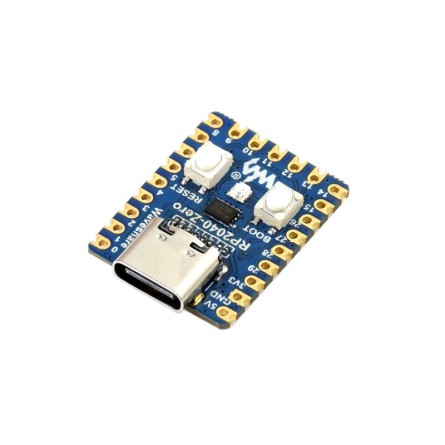
Microcontroller chip RP2040 Zero type Pico Raspberry Pi
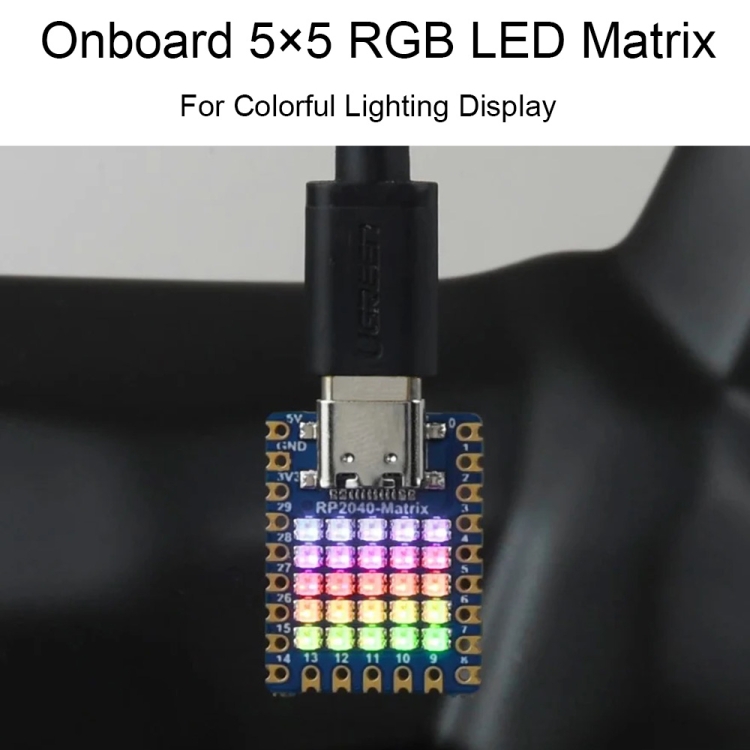
Waveshare 24594 5×5 RGB LED Matrix RP2040 Dual Core Processor Development Board
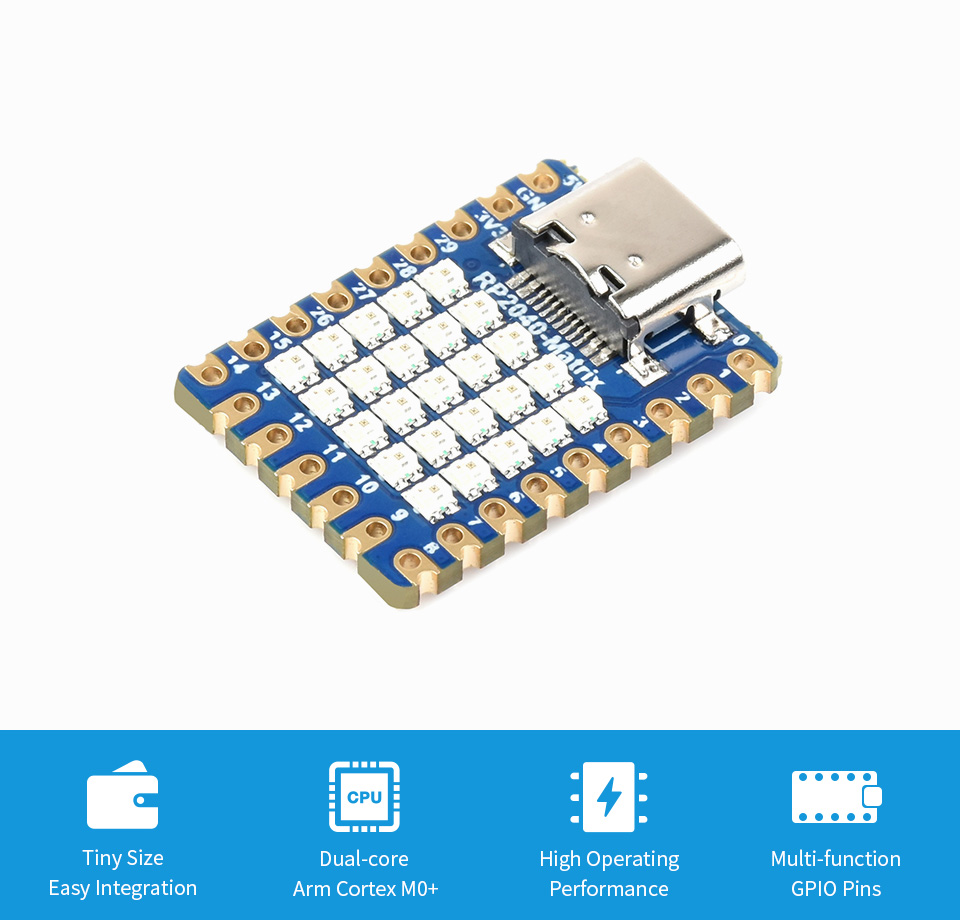
Waveshare RP2040-Matrix Development Board, Onboard 5×5 RGB LED Matrix, Based On Official RP2040 Dual Core Processor
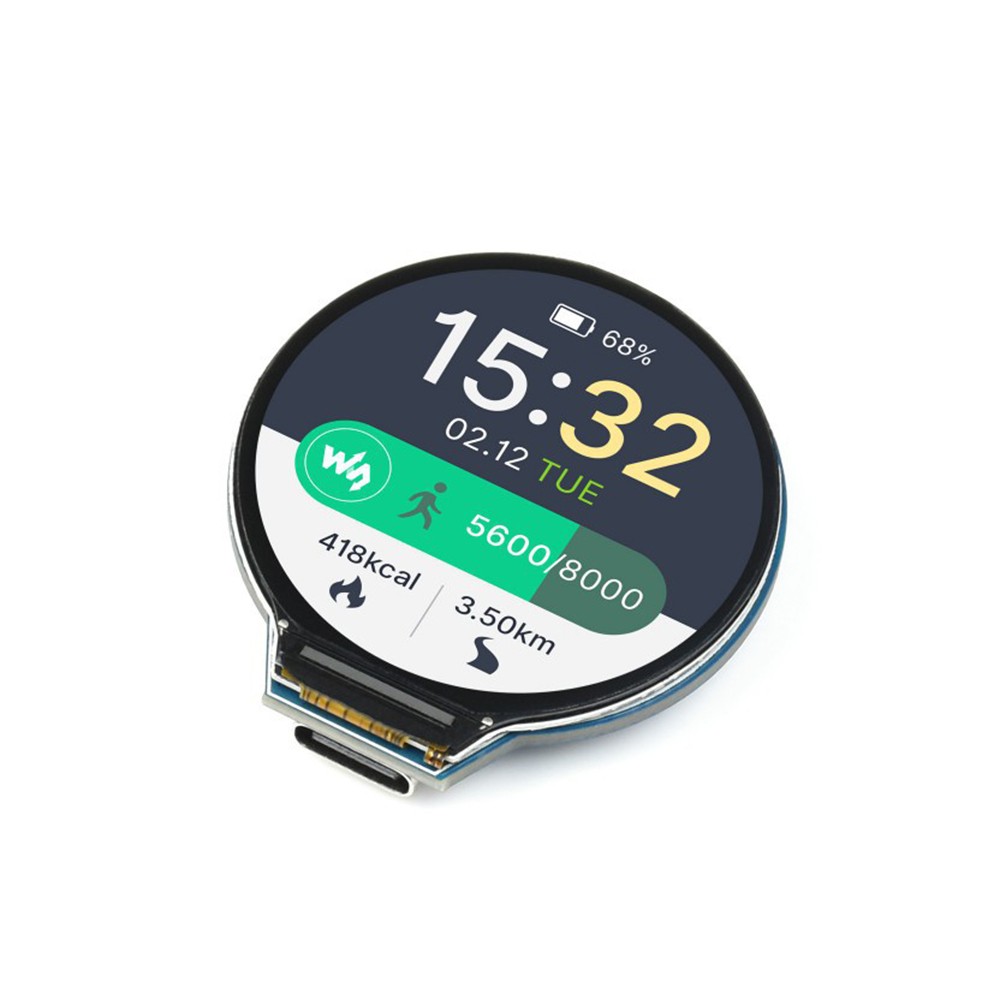
Buy WaveShare RP2040 MCU Board, With 1.28inch Round LCD, Accelerometer and Gyroscope Sensor at Best Price

Hopper display driver for 8x8 LED Matrix on Waveshare RP2040-Plus
Enter the (LED) matrix with this all-in-one, USB-C powered controller for HUB75 panels. Interstate 75 is a RP2040-based driver board for HUB75-style LED matrices. It's designed to plug neatly into the back of a LED panel, and provides a quick and easy way to whip up some scrolling signage or an eye-catching LED display for sensor outputs. I75 is powered and programmable by USB-C.
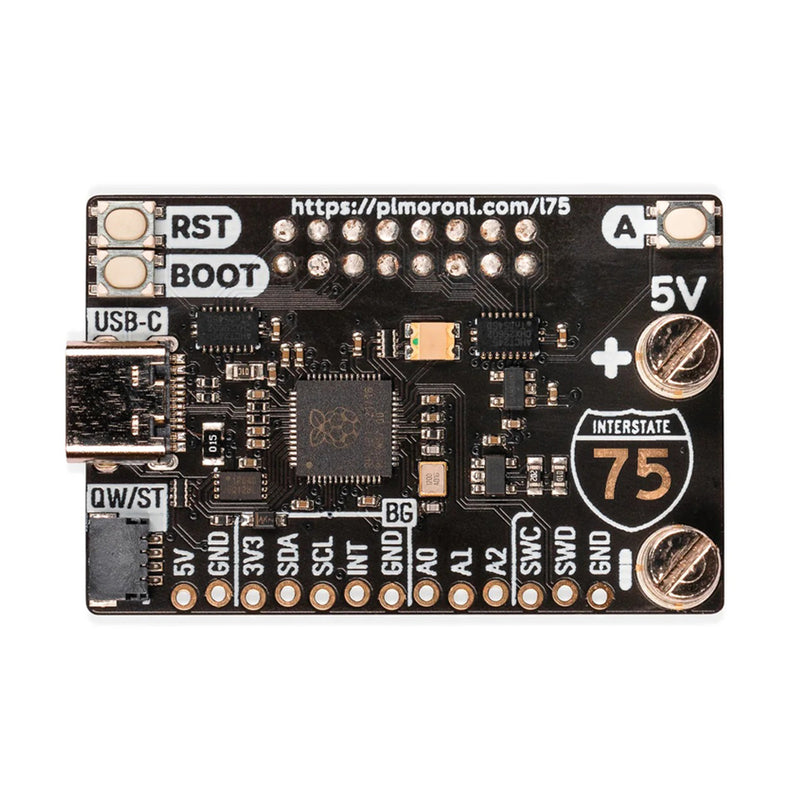
Pimoroni PIM584 Interstate 75 - RGB LED Matrix Driver

Spotpear Raspberry Pi Pico RP2040 bit board Size & Port high Compatible BBC micro bit
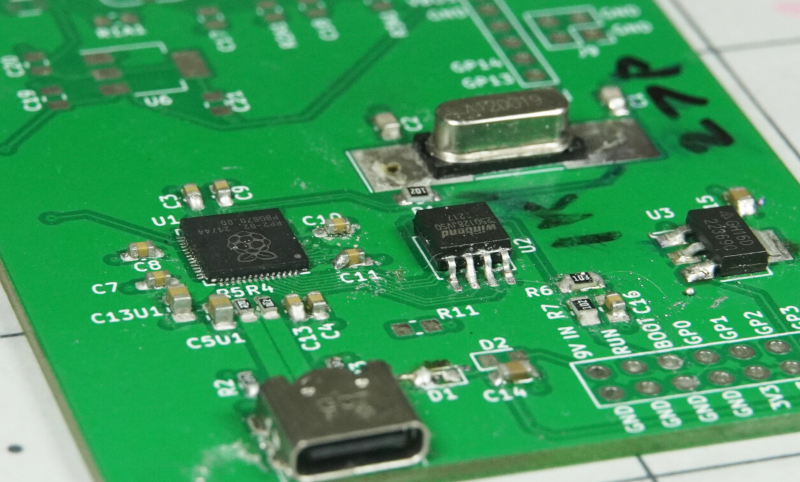
How Not To Build An RP2040 Board

Best RP2040 Boards 2024
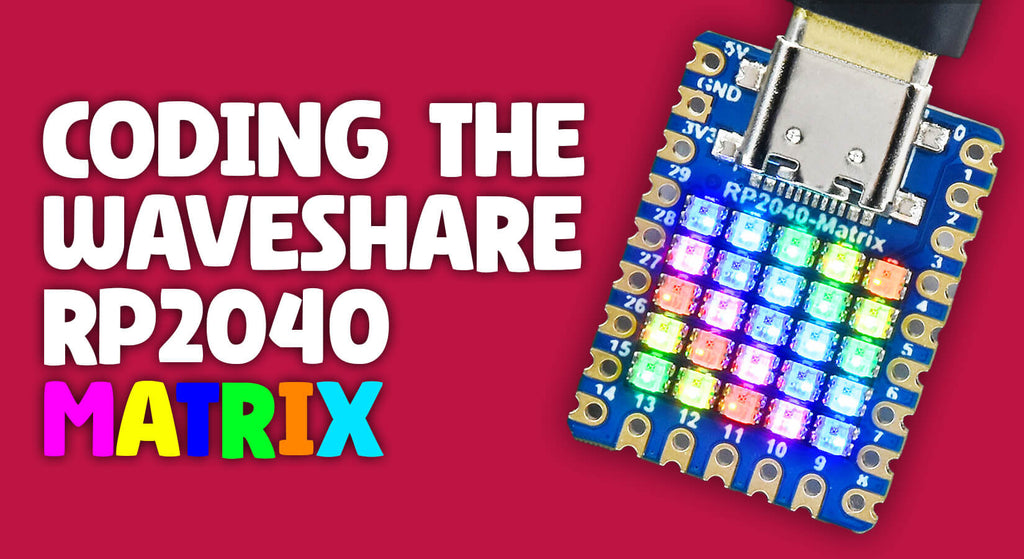
Coding the Waveshare RP2040 Matrix
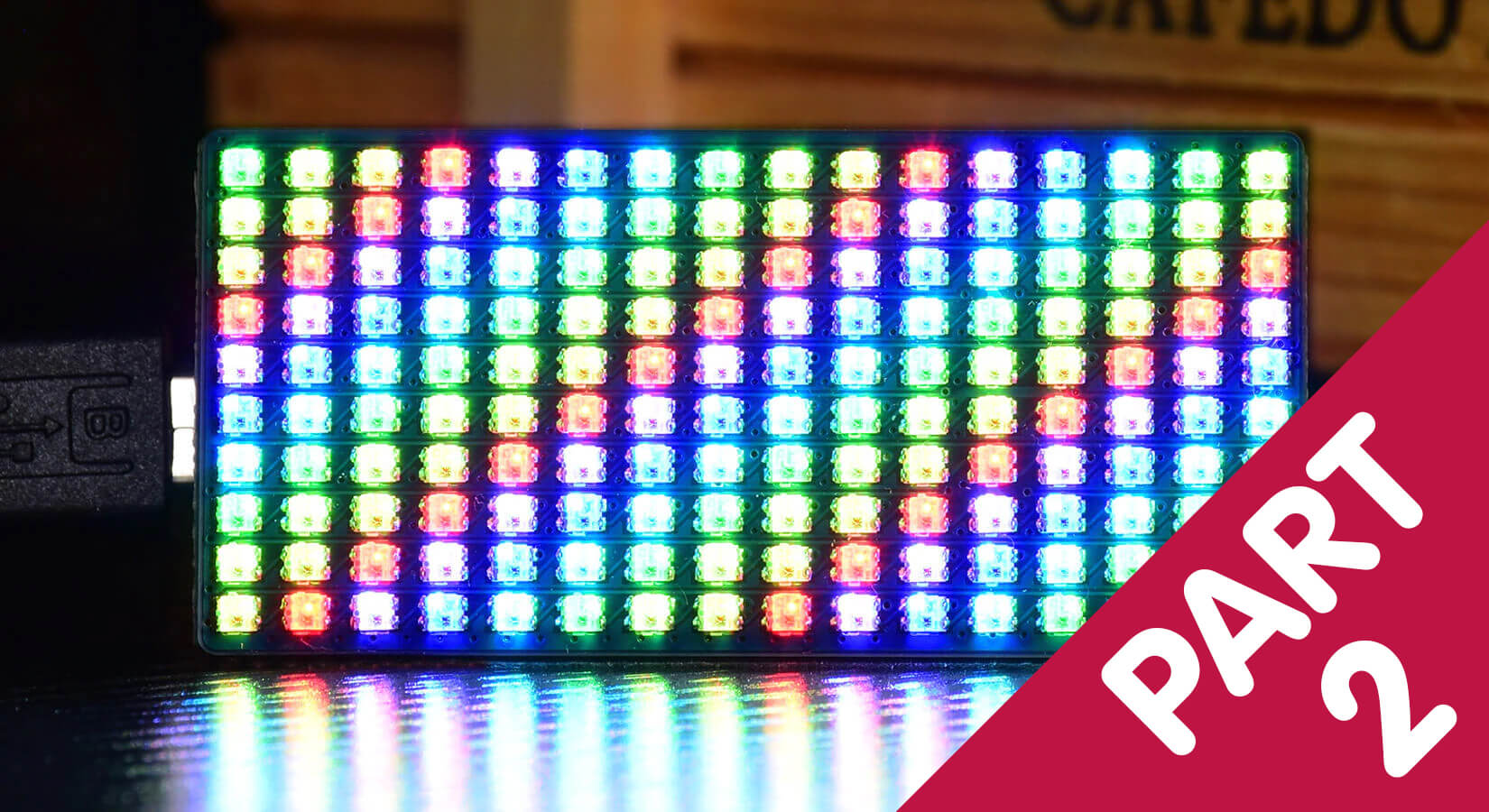
How to use the Waveshare RGB Full-colour LED Matrix Panel for Raspberry Pi Pico - Part 2
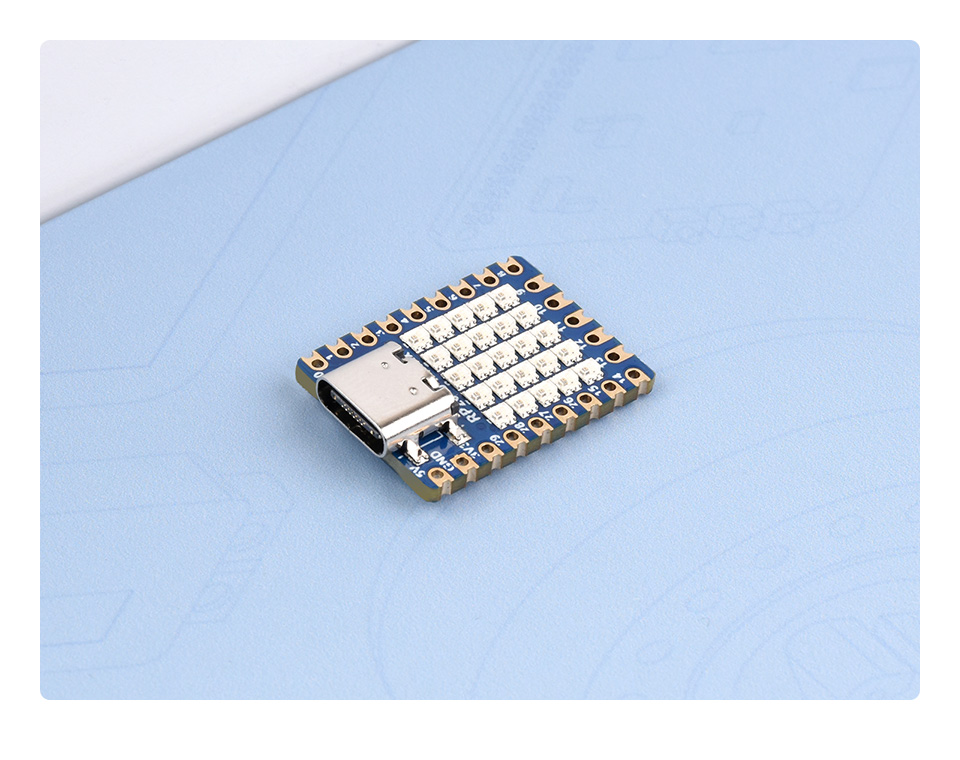
Waveshare RP2040-Matrix Development Board, Onboard 5×5 RGB LED Matrix, Based On Official RP2040 Dual Core Processor
Recommandé pour vous
 Waveshare 800x480 4.3inch HDMI LCD IPS Capacitive Touch Screen for Raspberry Pi14 Jul 2023
Waveshare 800x480 4.3inch HDMI LCD IPS Capacitive Touch Screen for Raspberry Pi14 Jul 2023 Waveshare Industrial IoT Wireless Expansion Module Designed for Raspberry Pi Compute Module 414 Jul 2023
Waveshare Industrial IoT Wireless Expansion Module Designed for Raspberry Pi Compute Module 414 Jul 2023 STL file Waveshare 7 (H) case 🔧・3D printing template to download・Cults14 Jul 2023
STL file Waveshare 7 (H) case 🔧・3D printing template to download・Cults14 Jul 2023 Waveshare L76B GNSS Module for Raspberry Pi Pico14 Jul 2023
Waveshare L76B GNSS Module for Raspberry Pi Pico14 Jul 2023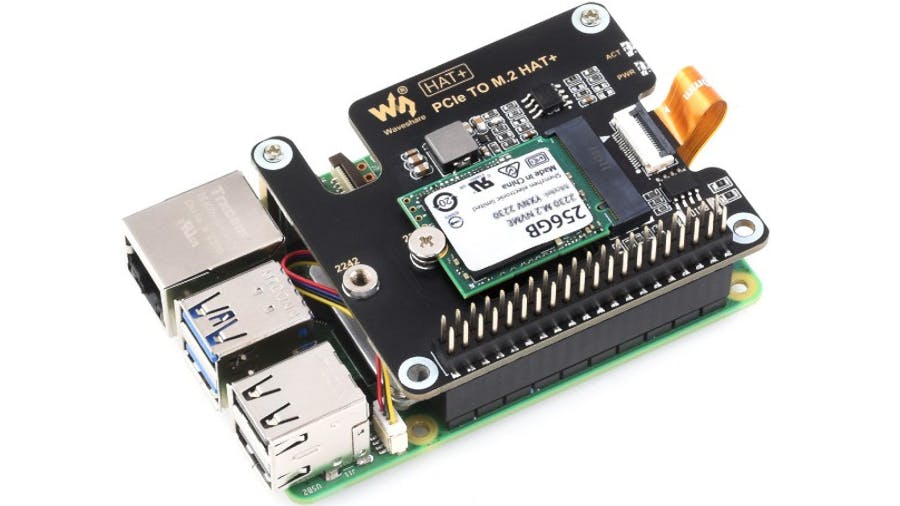 Waveshare Launches an M.2 HAT+ Board for the Raspberry Pi 5 — for Under $1014 Jul 2023
Waveshare Launches an M.2 HAT+ Board for the Raspberry Pi 5 — for Under $1014 Jul 2023 Module for capturing video from HDMI - HDMI to USB 3.0 adapter - Waveshare 24211 Botland - Robotic Shop14 Jul 2023
Module for capturing video from HDMI - HDMI to USB 3.0 adapter - Waveshare 24211 Botland - Robotic Shop14 Jul 2023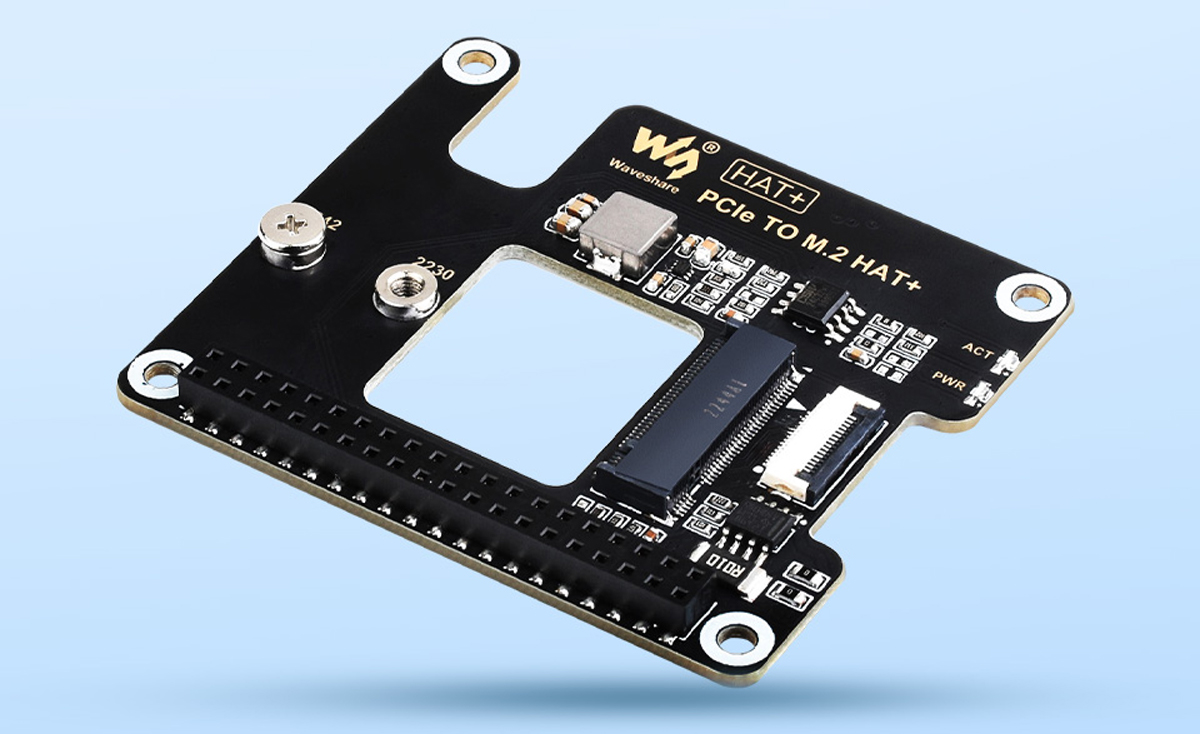 Waveshare PCIe to M.2 adapter for Raspberry Pi 5 will only cost you $8.99 - CNX Software14 Jul 2023
Waveshare PCIe to M.2 adapter for Raspberry Pi 5 will only cost you $8.99 - CNX Software14 Jul 2023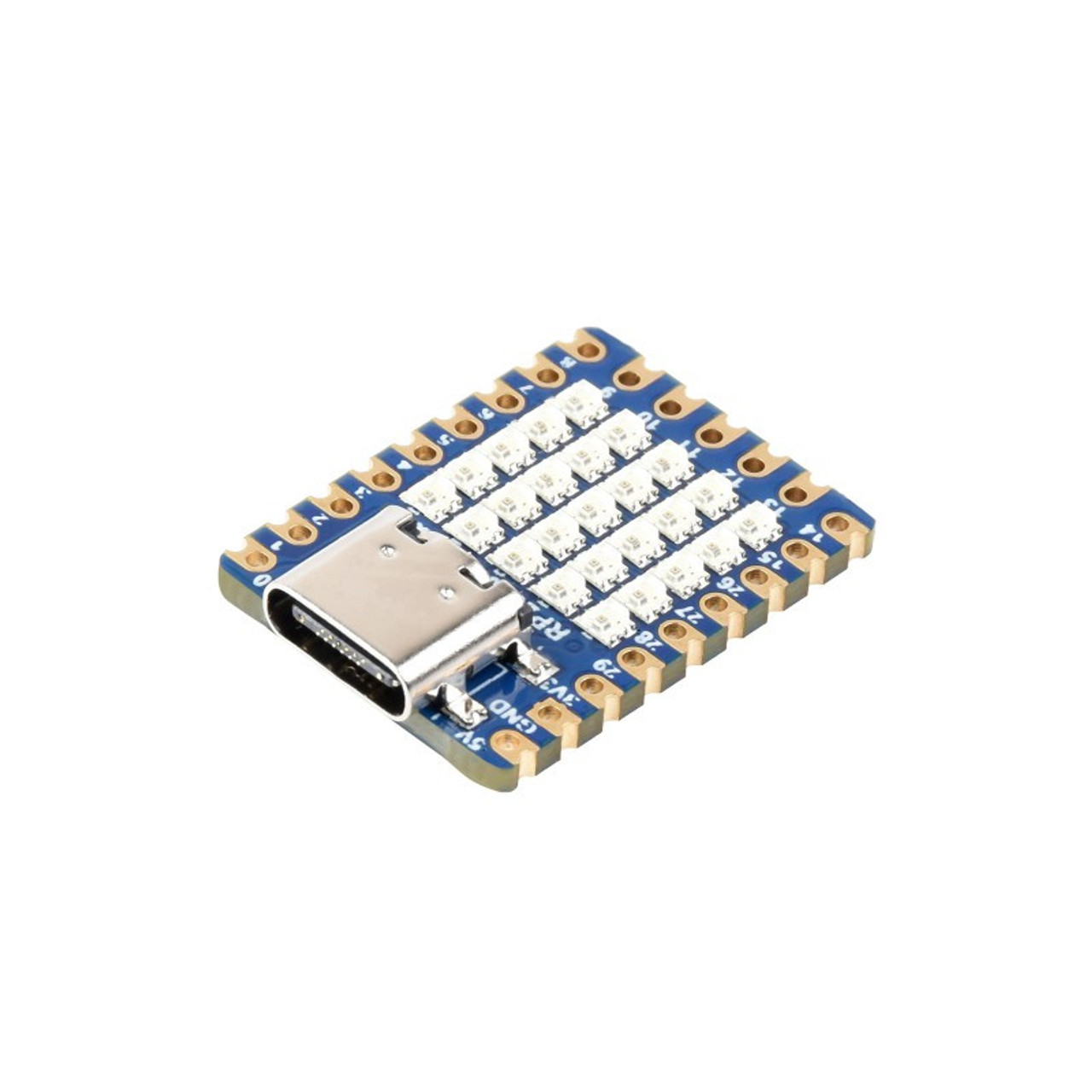 Waveshare RP2040-Matrix Development Board, 5×5 RGB LED Matrix14 Jul 2023
Waveshare RP2040-Matrix Development Board, 5×5 RGB LED Matrix14 Jul 2023 Waveshare Serial Expansion Hat for Raspberry Pi I2c Interface 2-ch UART 8 GPIOs for sale online14 Jul 2023
Waveshare Serial Expansion Hat for Raspberry Pi I2c Interface 2-ch UART 8 GPIOs for sale online14 Jul 2023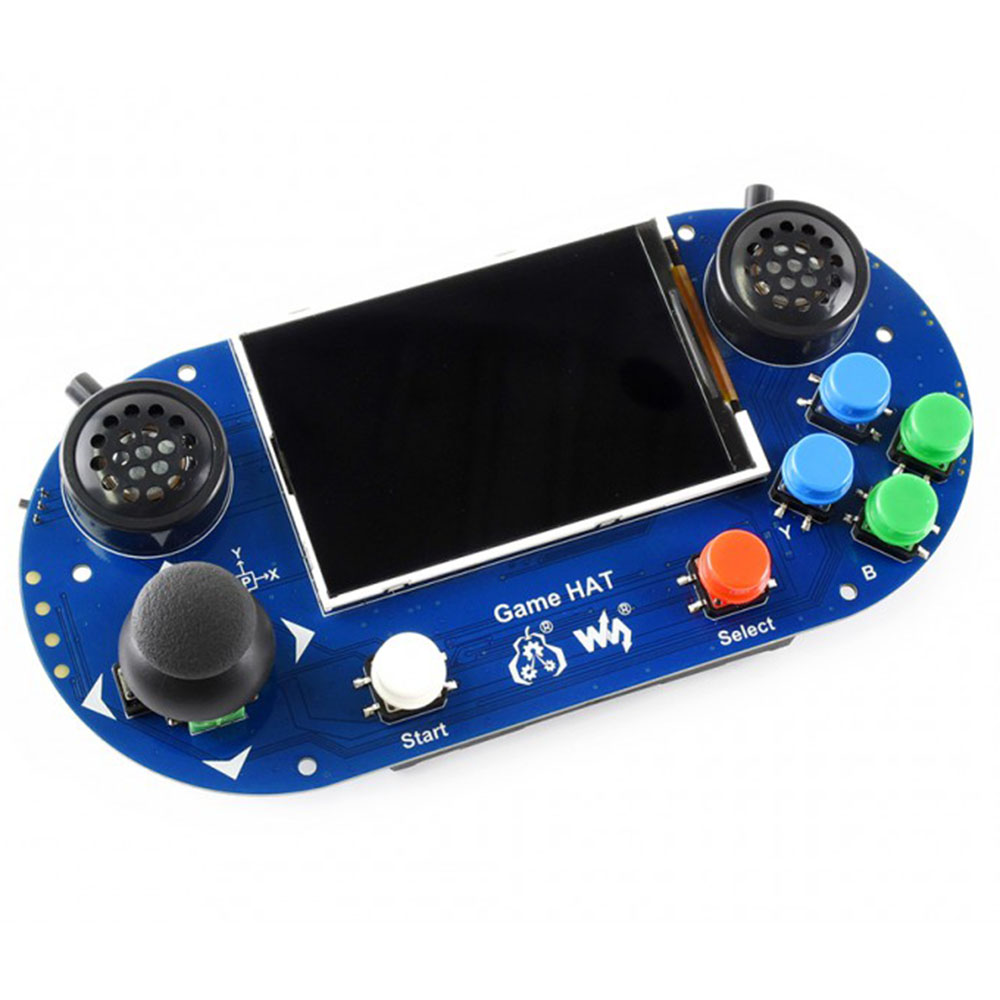 Waveshare Raspberry Pi Accessoires Pack G Multi14 Jul 2023
Waveshare Raspberry Pi Accessoires Pack G Multi14 Jul 2023
Tu pourrais aussi aimer
 Housse Kindle Paperwhite 5 (2021) Paillettes - Dealy14 Jul 2023
Housse Kindle Paperwhite 5 (2021) Paillettes - Dealy14 Jul 2023 Leborgne, un aérateur et brasseur de compost qui accélère le processus de décomposition et diminue les odeurs - NeozOne14 Jul 2023
Leborgne, un aérateur et brasseur de compost qui accélère le processus de décomposition et diminue les odeurs - NeozOne14 Jul 2023 Maquette A350-900 plastique 1/20014 Jul 2023
Maquette A350-900 plastique 1/20014 Jul 2023 Draisienne 2Way Next de Kinderkraft14 Jul 2023
Draisienne 2Way Next de Kinderkraft14 Jul 2023 PNY Pro Elite V2 Clé USB 3.2 Gen 2 256Go, Vitesse de Lecture jusqu'à 600Mo/s : : Informatique14 Jul 2023
PNY Pro Elite V2 Clé USB 3.2 Gen 2 256Go, Vitesse de Lecture jusqu'à 600Mo/s : : Informatique14 Jul 2023 Support douchette mural sans fixations à ventouse by Eurosanit14 Jul 2023
Support douchette mural sans fixations à ventouse by Eurosanit14 Jul 2023 RADIKAL RK120220 Antivol U moto homologué SRA ø18 120x220 Haute qualité - Voiture - Achat & prix14 Jul 2023
RADIKAL RK120220 Antivol U moto homologué SRA ø18 120x220 Haute qualité - Voiture - Achat & prix14 Jul 2023 Encuryna 100 Pièces Caissettes Cupcake, Caissettes Papier Muffins Moule, Caissettes de Pâtisserie, Caissettes de Décoration pour Cupcakes, Muffin Cupcake pour Gâteaux, Dessert, Pâtisseries (2# marron) : : Cuisine et Maison14 Jul 2023
Encuryna 100 Pièces Caissettes Cupcake, Caissettes Papier Muffins Moule, Caissettes de Pâtisserie, Caissettes de Décoration pour Cupcakes, Muffin Cupcake pour Gâteaux, Dessert, Pâtisseries (2# marron) : : Cuisine et Maison14 Jul 2023 LEURRE SOUPLE SHAD KIT ROACH 60 RTC GARDON / FIRETIGER CAPERLAN14 Jul 2023
LEURRE SOUPLE SHAD KIT ROACH 60 RTC GARDON / FIRETIGER CAPERLAN14 Jul 2023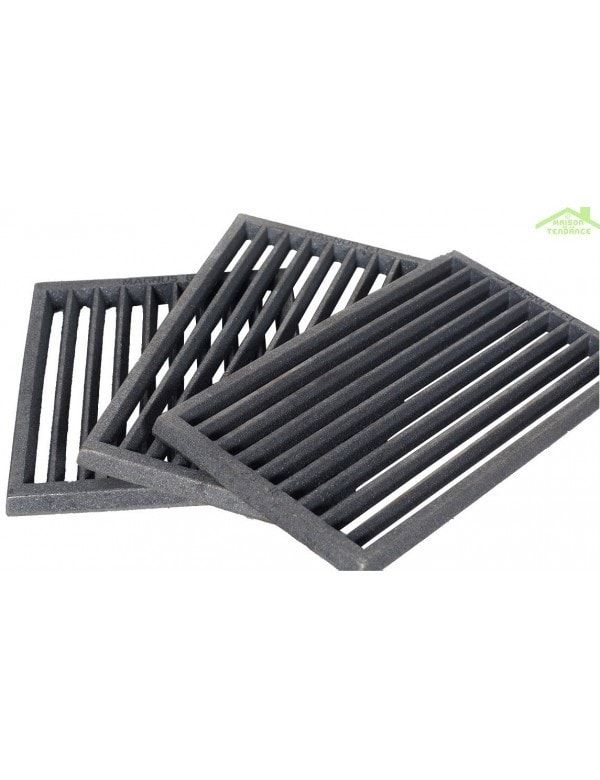 Grille de cheminée en fonte plusieurs dimensions FARMCOOK Pas Cher14 Jul 2023
Grille de cheminée en fonte plusieurs dimensions FARMCOOK Pas Cher14 Jul 2023